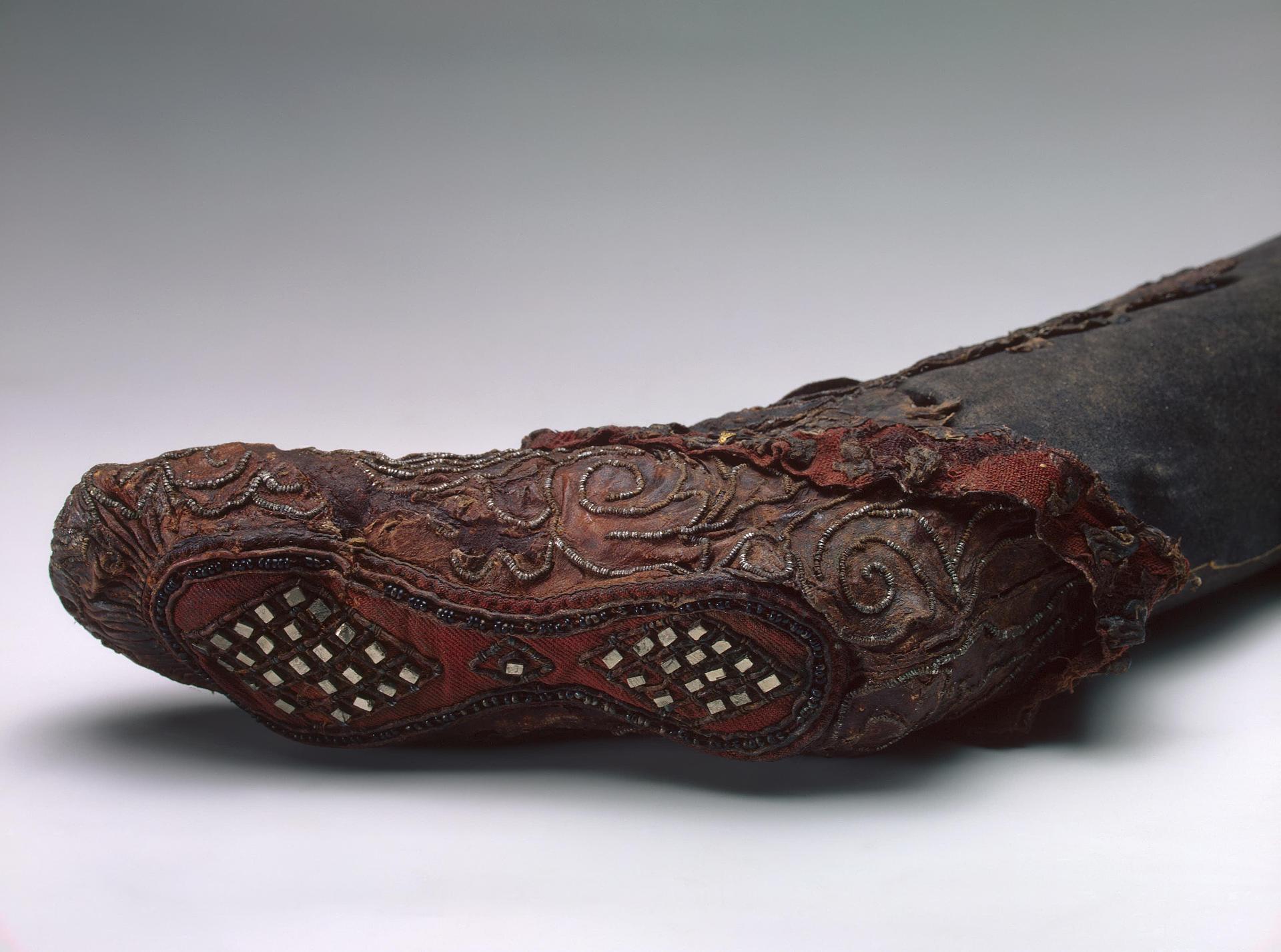Archaeologists discovered a spectacular find in Siberia’s Altai Mountains: a virtually undamaged women’s boot estimated to be 2,300 years old. The boot is composed of soft red leather and has a geometric design embroidered on the sole with pyrite crystals and black beads. The Scythians, a nomadic race that traveled the Eurasian continent, are supposed to have owned it.
The shoe’s discovery in a Scythian burial mound explains the other significant items, which include jewelry, food, and weaponry. The Scythians, like other ancient civilizations, were known to bury their deceased with their valuables, allowing them to travel to the afterlife. Each body was put in a log coffin within a timber cabin-like structure buried far down.

The Altai Mountains’ cold, dry climate has preserved the shoe for over two millennia, allowing historians to analyze its detailed characteristics. Historians are particularly interested in the beading on the shoe’s sole, which they believe was intended to be visible to others during social gatherings around a fire. Some scholars believe the shoe was manufactured specifically for burial, which would explain its perfect condition.

The discovery of this magnificent shoe gives information on the lifestyle and traditions of the ancient Scythians, a people that played an important part in Eurasian history. The shoe is now part of the State Hermitage Museum’s collection of ancient antiquities in St. Petersburg, Russia, where visitors from all over the globe may appreciate and study it.






